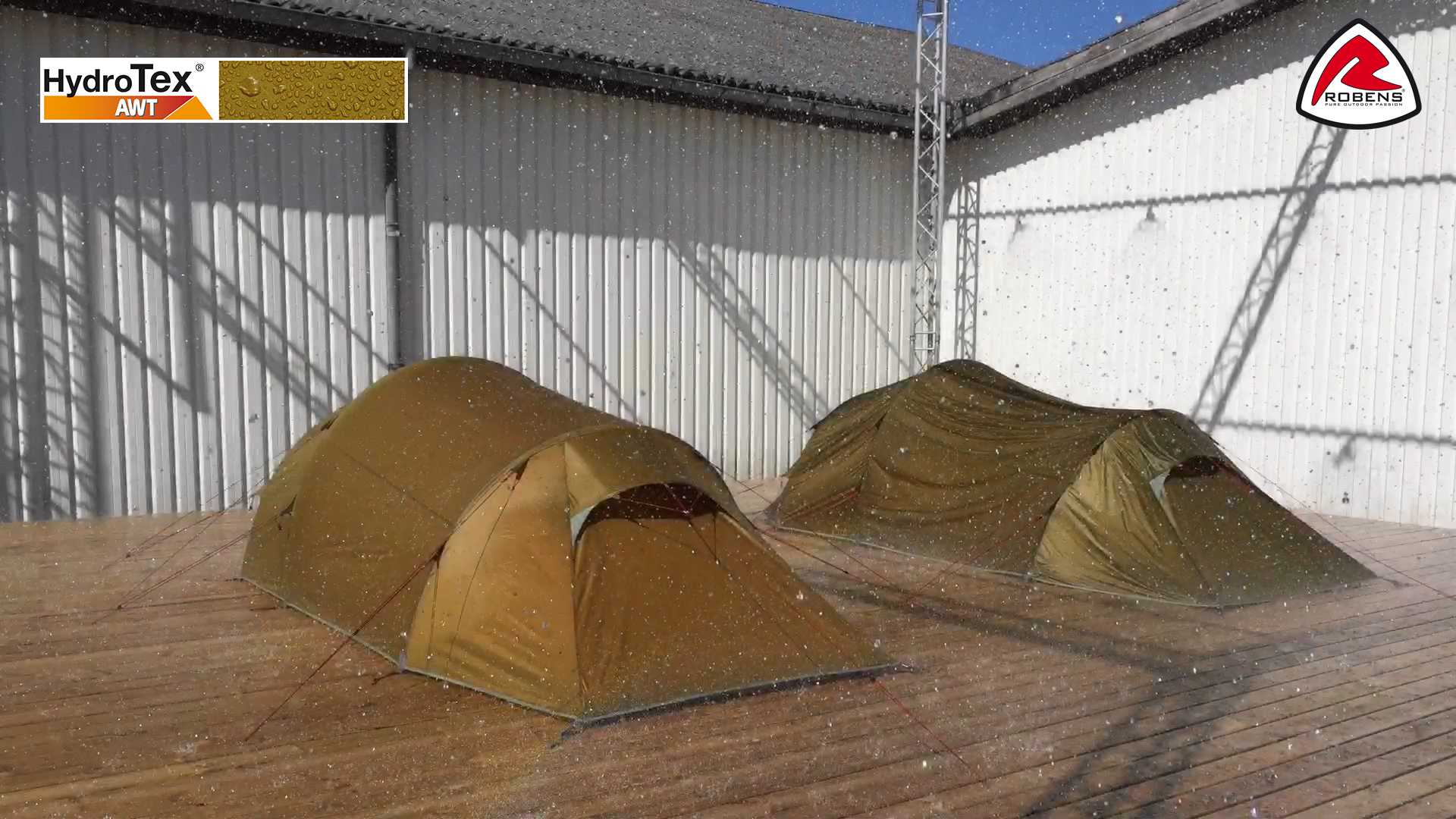The Robens R&D team explain their focus on critical all-weather tension and fabric development for tents
We’ve all seen a premium performance lightweight polyamide (nylon) tent in the morning. The sagging flysheet and lack of tension on any guy line hardly inspire confidence.
At Robens we know the morning sag points to polyamide’s hydrophilic nature that allows it to soak up two to three per cent water. This may not sound much, but it is all it takes for the outer to lose all tension.
And the consequences can be much more severe than just a sloppy-looking tent…
Tension and performance
Tension is crucial to stability in high winds by maintaining a tight aerodynamic profile unobstructed by flapping fabric. While you can ensure your tent is pitch perfect during the day it performs unsupervised during sleep when moisture will cause nylon to sag. It then only takes the wind to pick up for the tent to lose stability.
Sag also hampers a tent’s ability to shed water. Consider an umbrella where hydrostatic head is often less than 500mm. If an umbrella sags water would pool and the fabric would quickly start to leak so its design quickly and easily sheds water. This is the same in a tent – taut fabric prevents pooling that can cause leaks.
Polyester versus Nylon
Polyester has at least two key properties superior to nylon.
- It absorbs a lot less water and therefore maintains its tension and dries faster to reduce carried weight.
- It’s more resistant to UV damage, the main factor that lowers the lifespan of any lightweight tent by reducing its outer’s tear strength.
So, what is the downside to polyester and why are most premium tent manufacturers using nylon fabrics?
- It is easy to use standard market materials and draw on their acceptance. Nylon looks the obvious choice on paper. Desirable characteristics include a nicer feel – cheaper polyester fabrics seem stiff and noisy in the wind by comparison.
- Nylon is easier to sew, simplifying production.
- Most important, new nylon normally has a higher tear strength when compared like for like with polyester. This is a powerful message when communicating the quality of your tent fabric. Higher tear strength means stronger tent, right?
Changing fabric characteristics
It’s not enough for a Robens tent to look good on paper and perform well in a lab. As outdoor enthusiasts, we also want our tents to exceed expectations in the field − in all weathers. So, we define needs and work to eliminate problems. For us, a tent that moves a lot in the wind is under more stress and will make more noise than one correctly tensioned. We consider the effect this has on stability. We consider how nylon degrades under UV light and how this affects tear strength.
It is important to understand that a material’s basic characteristics can be enhanced by treatments at fibre and fabric manufacturing stages. And we work with specialists to do just that − our polyesters are a far higher quality than those normally used for tents.
Our Hydrotex® AWT and AWT-LT lightweight polyester fabrics have a tear strength between 8-12kg − stronger than most nylon tent fabrics. Besides the inherent polyester property that prevents it absorbing water, its siliconised elastomer finish creates a permanent waterproof barrier on both sides of the fabric and provides extra UV protection that adds to its lifespan. Its slick finish also makes it easier to pack away.
Components count
All-weather tension is not just about tent fabric. Our designs undergo extensive field trials after aggressive tests at our in-house wind and rain test facilities. Many incorporate weather-beating features like our Storm Guard system for enhanced stability in high winds. But it is the components used that provide the final key. Like fabric, cord varies a lot when wet and our low stretch guy lines work perfectly with our AWT fabrics to provide optimum stability. And, because any guy adjustment system that fails to lock effectively under tension adversely affects a tent’s performance, we use premium products, including double rope guys, in all corners and other stress areas of our tents.
Watch our video to see how a Robens AWT polyester tent performs against a premium nylon lightweight tent under the controlled conditions of our wind and rain test facilities:
Header image © Philip Gunkel










